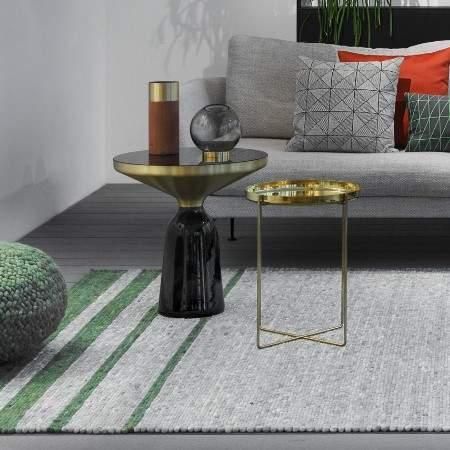Local Storage seems to be disabled in your browser.
For the best experience on our site, be sure to turn on Local Storage in your browser.
10 Home Decorating Mistakes That Ruin Designs (and 10 Great Alternatives)
We've written a lot about what you should do when you compose your design, but we haven't covered much about what you shouldn't do. Many bad designs result from people thinking they know what they're doing, but really don't. That's something we want to change.
Today, we'll discuss 10 mistakes people make when designing their homes. Additionally, we will provide you with 10 alternatives to each mistake so that you can create a design that works beautifully in your home.
1. Scale-ignoring
How big does the furniture seem when you walk into a room? When you see a huge couch paired with a tiny end table, you think, "That just looks off." That's because the designer didn't consider scale when designing the piece.
Scale - what is it?
When two objects are compared, scale refers to the perception of size. Generally, the human mind expects similar-sized objects to be paired together. We can detect something off when that balance is thrown off.
For two objects to fit well together, they don't have to be the same size. It's impossible to find an end table as large as a couch. Let us know if you ever do - that would be interesting to see!
What You Need to Know About Balancing Scale in Your Design
Professional interior designers use the Golden Ratio to account for scale. There is a naturally recurring numerical equation of about 1:1.61, or 60/40. It can be seen in the scale of the human body, in works of art, and even in interior design.
Using the Golden Ratio, measure out the entire floor space of your room (let's say it is 100 square feet). Furniture shouldn't take up more than 60% of your total space (in this case, 60 square feet). In addition, accent pieces should measure about 40% of the pieces they support. Your coffee table should measure about 4' x 2.4' if your sofa measures 10' x 6'.
By using the Golden Ratio, you can ensure that your furniture is well-balanced in your room and that objects are neither too large nor too small.
2. Matching everything
It is not uncommon for home decorators to be terrified of things not matching. Design is stigmatized if something doesn't match perfectly. In home design, if everything matches, it can look incredibly bland. It applies to colors, textures, and even materials.
Variety is the spice of life
Two pieces with different colors and textures can still look beautiful together, even if they aren't exactly the same.
Individual pieces of decor aren't the only way to implement this concept. A varied and interesting design can be created by mixing and matching multiple pieces.
3. Randomly selecting decor pieces
However, you shouldn't just use anything that catches your eye when it comes to your decor pieces. We've often seen rooms that looked thrown together because the decorator picked whatever looked good at the time. (Or they didn't have a theme at all).
Identify a unifying theme
We've discussed the importance of selecting a theme before crafting your design, and it certainly applies here. Your theme will help you choose pieces that align with your vision without looking random. To introduce some variety in your design, you can also choose a particular style. Styles that are popular include:
Contemporary
Modern
Scandinavian
Traditional
Bohemian
4. Over-decorating
Bad designs are caused by people not being able to say, "Enough is enough." There's a point in every design where you can add too much furniture or too many accent pieces. The result can be a feeling of claustrophobia in a room that feels overburdened.
Design with a little white space
In a design, don't underestimate the power of white space. A little white space allows people to appreciate each piece individually. You can also let your pieces breathe since they aren't competing with each other.
Maintaining balance can be achieved by starting with a centerpiece. It could be a rug, a picture, a window, or anything else you want to draw attention to in your room. Be mindful of how perceptible your centerpiece is as you arrange your other decor around it. Check your arrangement with someone else. Introduce more white space if they can't easily identify your centerpiece or the room feels cluttered.
The furniture
5. Colors that don't fit the mood
Any design relies heavily on colors. Besides looking appealing, they also channel certain emotions. The designer used colors that didn't fit the mood of the design, resulting in an otherwise beautiful design being completely out of sync.
Before choosing colors, consider their emotional impact
There are different emotional aspects associated with different colors. Before selecting your colors for a room, decide what emotions you want the room to convey. Warm colors like red, yellow, and orange, for example, can foster passion or energy in your room.
Having a basic understanding of color theory is helpful when designing a room. By doing so, you will be able to choose colors that suit your mood, as well as a palette that looks interesting and appealing.
6. Leaving insufficient space for walking
Do you want to ruin a perfectly good design? Every time your family or guests want to move around the room, they can dodge furniture. In addition to their aesthetic appeal, furniture and accent pieces serve a practical purpose as well. It is important for people to enjoy sitting on a comfortable sofa or resting their feet on a warm rug. It simply does not work if they have to duck, dodge, and weave just to sit down and stretch out.
Design your walkways using a top-down floorplan
Make a top-down sketch of the room you'll be working with before you start arranging furniture. Draw your furniture and accent pieces, along with their dimensions. Consider the natural routes people will use to reach your seating areas as you sketch. Draw arrows from your doorways and connecting rooms to your seating area so people can take the quickest route. This will help you visualize how people will move about your room so that you can leave plenty of walking space.
7. Too much natural light is blocked
Light bulb technology has yet to replicate the stunning beauty of natural light. I don't think they'll ever get there either. Too many designs do not take natural light into account, resulting in cold and artificial spaces.
Bring in the sunshine
Design should never come at the expense of privacy. When you don't want people to be able to see into your home, such as in the bathroom or bedroom, cover your windows. In other rooms, however, incorporate as much natural sunlight as you feel comfortable with. Choose curtains made of thinner materials, such as cotton, or don't use any at all!
8. Always Following Trends
Every interior design business in the world likes to talk about what's hot and what's not. We confess - we've done the same thing. Finding inspiration and crafting a beautiful design can be accomplished by exploring different trends. Nevertheless, if you only follow trends, you'll spend a small fortune every year redecorating, and you'll end up with a design you don't like.
Find Your Style by Trusting Your Instincts
You know your own preferences better than anyone else, no matter how tempting it may be to keep up with the Joneses. Your favorite colors, fabrics, and textures are obvious to you. The fact that someone says they aren't in style doesn't mean they can't work for you.
Choose colors, fabrics, and styles that appeal to you most before you commit to your design choices. Decor can only be manufactured with a limited number of different base colors and fabrics. Every year, new trends emerge, but those materials won't change. If you know which pieces appeal to you most, you may only swap out a few rather than redecorate your entire home.
9. Not Setting a Realistic, Prioritized Budget
We believe that great rugs shouldn't cost a fortune. We prioritize quality and value over everything else in our pieces. In light of this, you should be realistic about how much your design project will cost. This is especially true if you plan to buy new furniture. Otherwise, you might find that you've spent all your money before you've even begun.
Don't let your money go to waste
Prioritizing how you'll spend your budget is the first step in creating one. Consider where you need to invest and where you can settle for a budget alternative. Furniture and rugs that are more expensive tend to be of better quality, although this isn't always true. Thrift stores usually have great accent pieces at very affordable prices, like vases, picture frames, and wall art. If you have a limited budget, we recommend that you prioritize furniture pieces at the top of your list, and settle for accent pieces at a lower price.
10. Too close to the wall furniture
If you're on the other side of the room, how easy is it to talk to you? Although we all know it's not a good option, it happens all the time. Furniture pushed too close to the wall reduces the white space we discussed earlier. Too far apart can also lead to people missing out on the intimacy you want them to feel.
Bringing Things Closer
You can easily fix this common mistake by bringing your furniture closer together. You can achieve this by placing your seating area on a large area rug. Besides serving as a great centerpiece, your rug also protects your floor.
Enjoy the joy of design by taking your time
This post covered a lot of information, and you may feel overwhelmed right now. In order to capture the perfect look, you might feel like interior design is this big, complex puzzle that you must solve. That doesn't have to be the case. Creating a home that looks beautiful and makes you feel comfortable is the goal of interior design. No design problem has a perfect solution, only your perfect solution.
We appreciate you taking the time to read this post. We hope you enjoyed it and got some great ideas from it. Happy decorating until next time!
Can you think of any other design mistakes you've seen? Do you have any tips from your own experience? Comment below with your thoughts!




